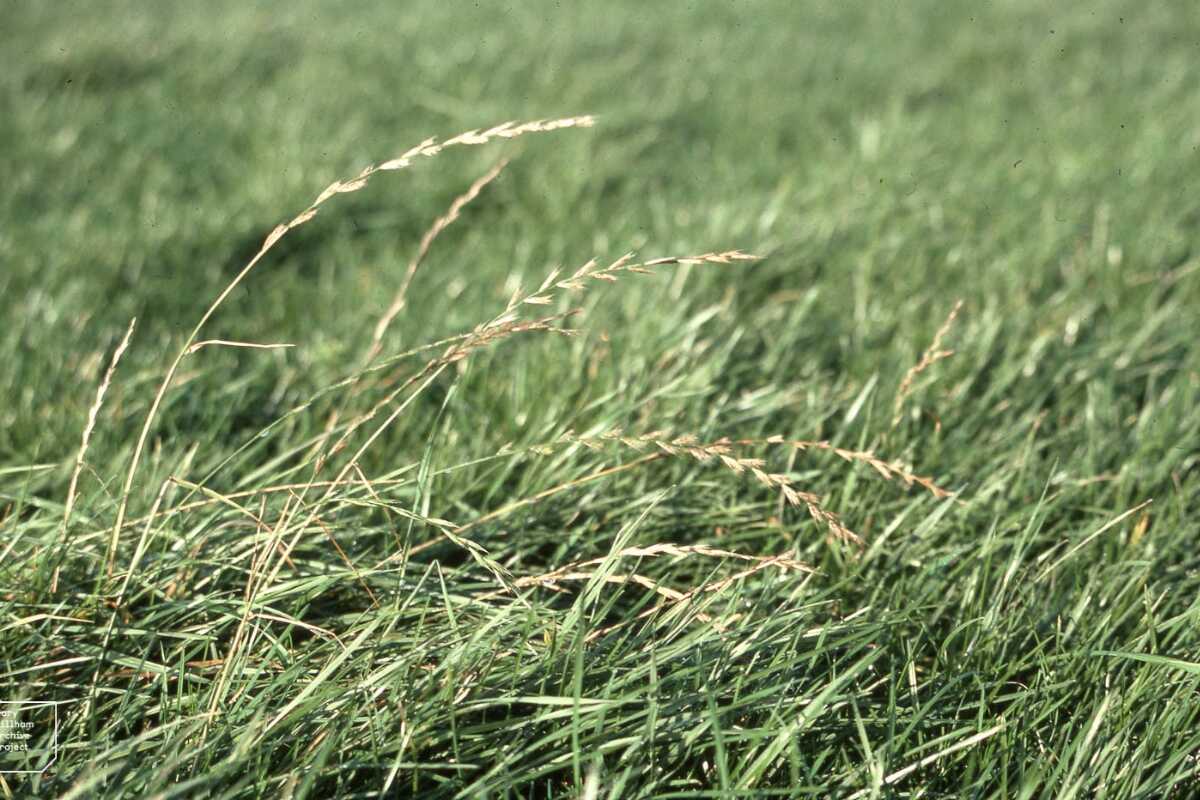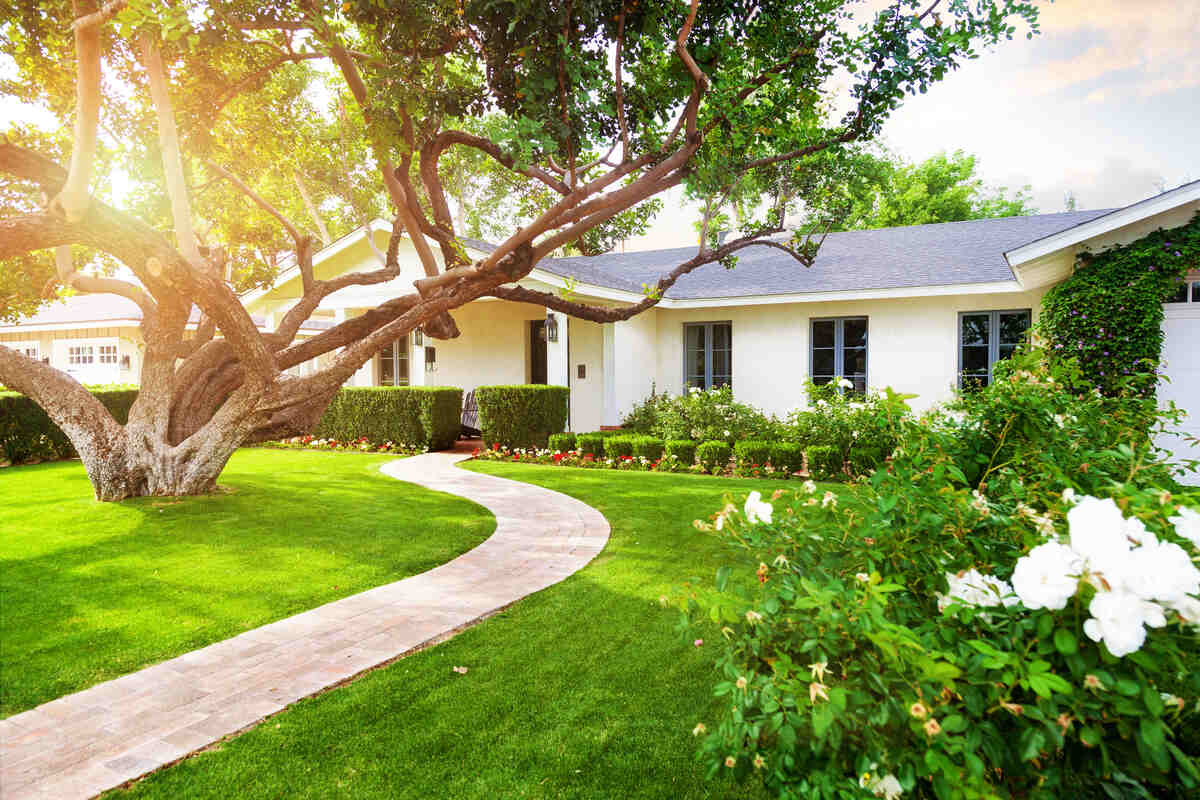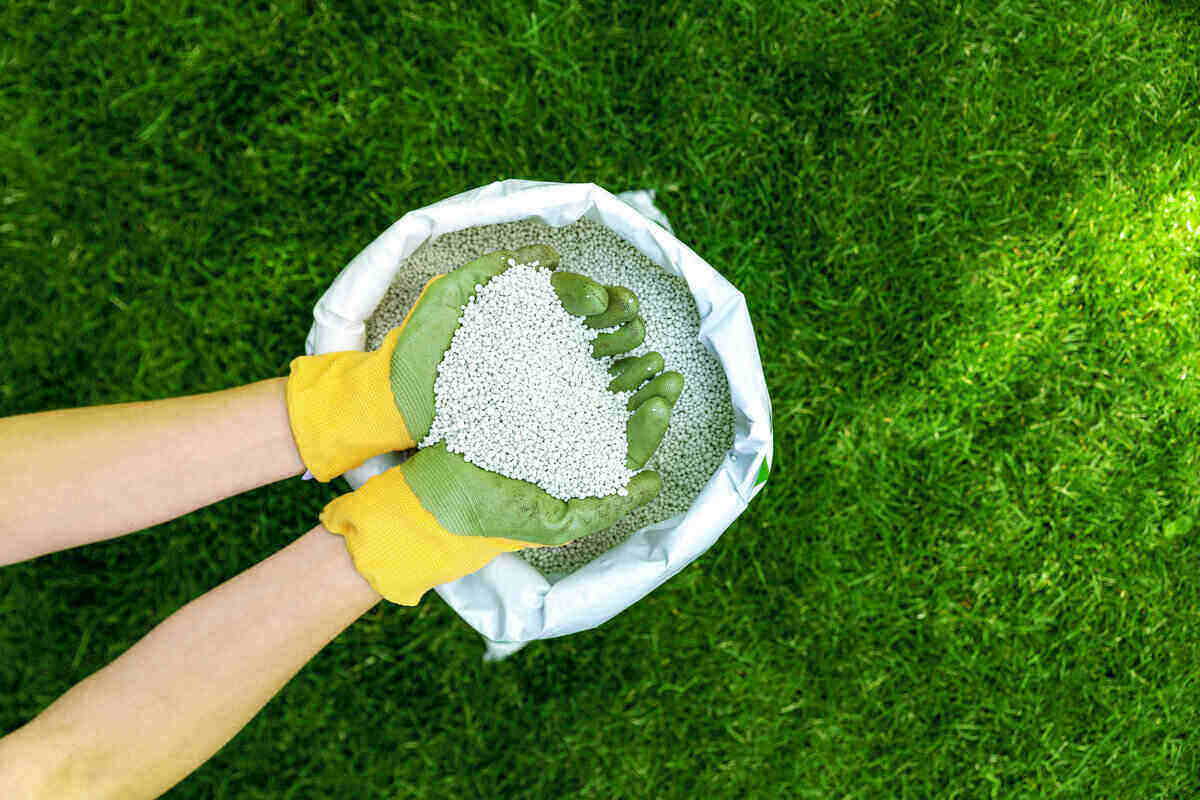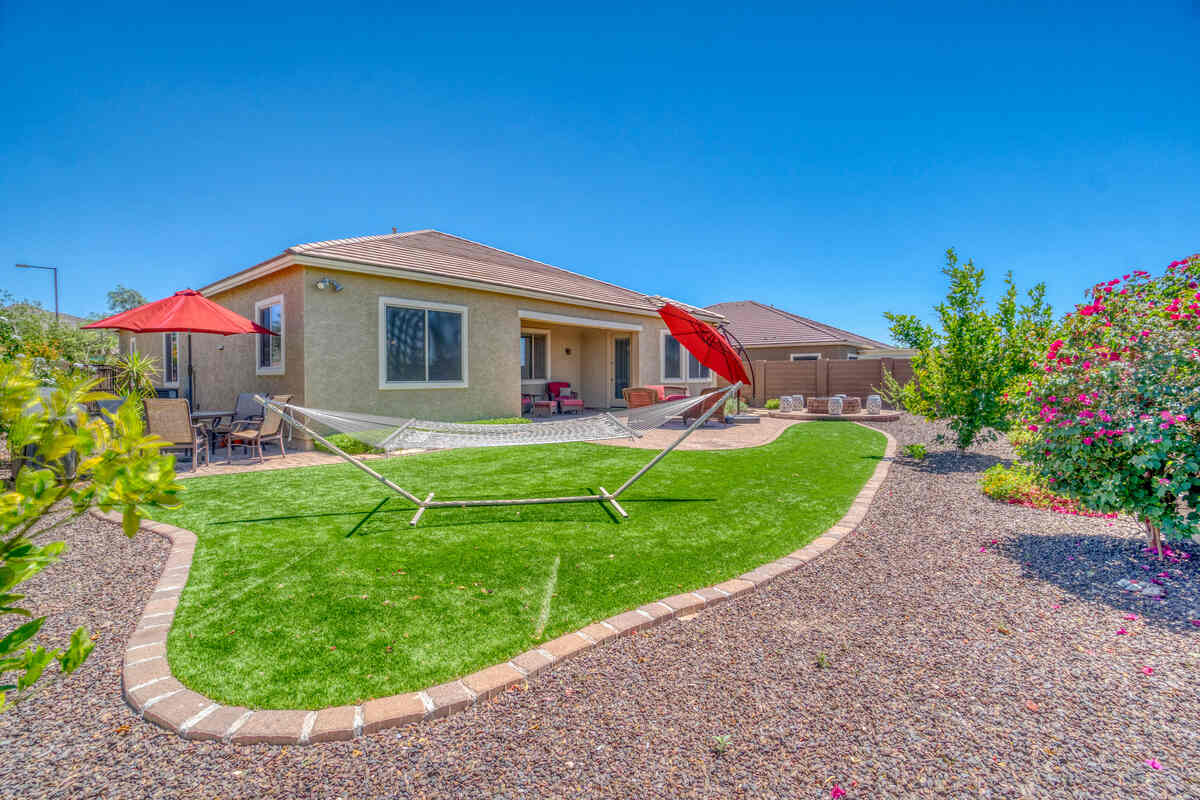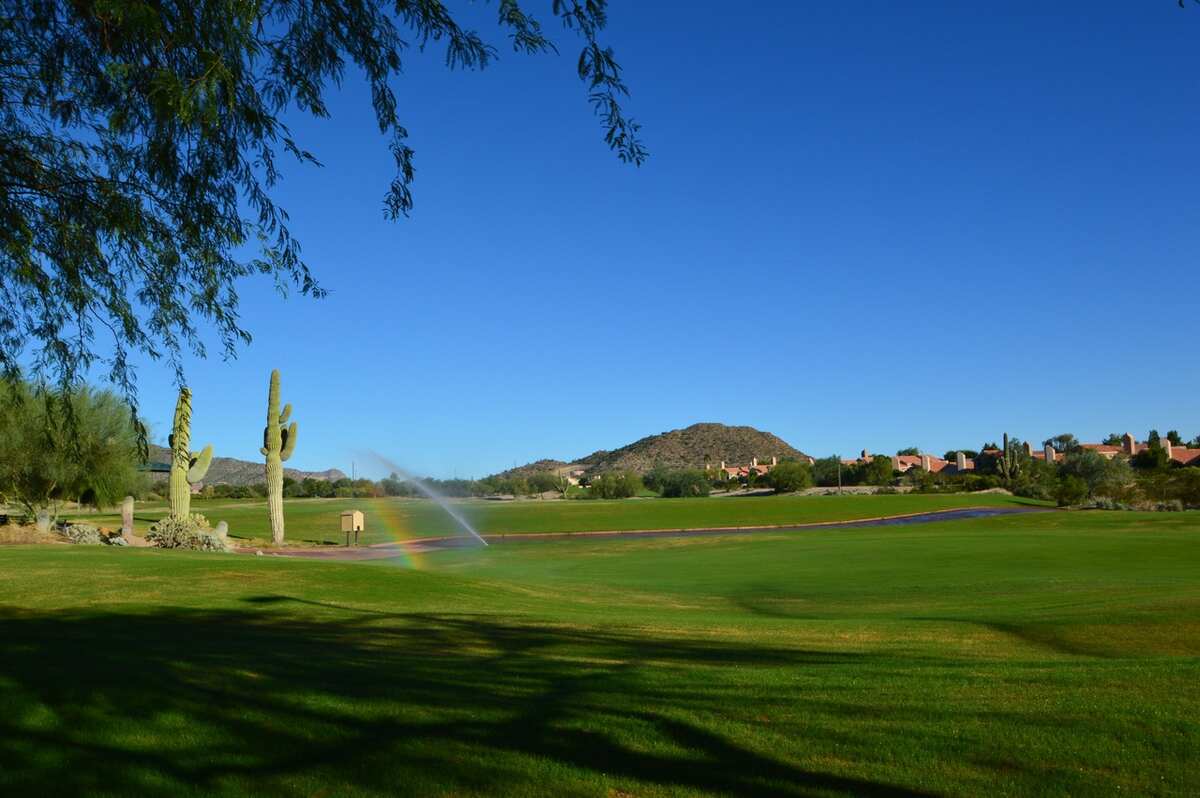
Growing lush, green grass year-round in Arizona is a two-season job. You start with a permanent summer lawn in May or June with Bermudagrass (a perennial). Then, overseed with a winter grass, typically ryegrass, every year in October. But that’s just the basic idea. Knowing how to grow grass in Arizona’s hot, dry climate requires time, attention, and some local tips.
Arizona’s alkaline soil comes with unique challenges, rainfall is scarce, and you have to use specific fertilizers. It sounds knotty but is relatively easy to tackle once you have a few essential steps to grow grass successfully in Arizona. And we made a list for you.
- 1. Know Your Arizona Soil
- 2. Keep the Lawn Small and Easy to Maintain
- 3. Choose the Best Grass for Arizona’s Climate
- 4. Seed Bermuda in May
- 5. Stick to a Good Watering Schedule During Summer
- 6. Test the Water Amount
- 7. Mow the Grass Taller from June to September
- 8. Aerate and Remove Thatch During the Growing Season
- 9. Fertilize Monthly from April to September
- 10. Overseed With Ryegrass in October
- 11. Water Less During Winter
- FAQ
1. Know Your Arizona Soil
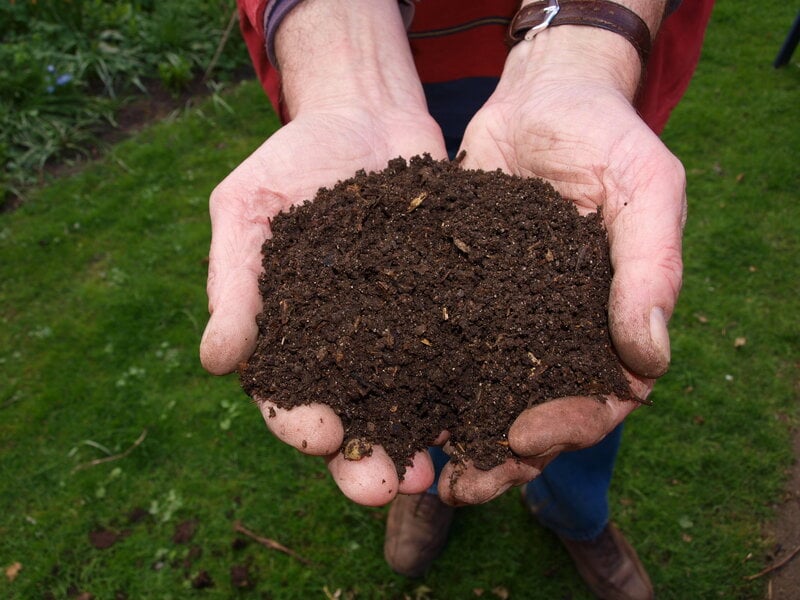
Arizona has various soil types, with the sandy-loam Casa Grande as the official state soil. Most are alkaline, making it difficult for plants to access iron, zinc, and phosphorus. Desert soils are also low in nitrogen and organic matter. That being said, it’s the same soil oranges and cotton thrive on, and you can grow beautiful, lush grass if you know how to manage it. The main issues to address are:
Soil pH
The University of Arizona says the average soil pH throughout the state is 6.5 to 8.5. Native grasses are adapted to these soil conditions. But to grow Bermuda, Zoysia, or tall fescue, you must test and amend the soil to keep the pH between 6 and 7.
Testing the soil is easy and costs only $10 to $20. All you need to do is collect samples around the yard and send them to your local Cooperative Extension office. You’ll get the results in a few days. To lower soil pH, apply sulfur or a product with sulfur, such as iron or aluminum sulfate. Compost can also help and adds valuable organic matter to the soil.
Pro tip: Balancing soil pH is a tricky and long-term task. To improve your chances, contact a lawn care professional to lend an expert hand.
Nutrient Deficiencies
Arizona’s soil is also low in nitrogen, which is an essential nutrient for photosynthesis. Grass blades (especially the old ones) turn yellow when your turfgrass doesn’t get enough nitrogen. To keep the lawn green, apply a slow-release fertilizer once every 4 to 6 weeks during the growing season.
Another cause of yellow grass is iron deficiency. Arizona’s soil has iron, but grassroots can’t absorb it because of the high pH. Here’s how you can correct this:
- Lower the soil pH and apply a fertilizer with iron.
- Use a foliar feeding formula.
Arizona soils also have little plant-available phosphorus since calcareous particles quickly tie it up. Use a phosphorus-rich fertilizer during the spring green-up and as part of your summer lawn care routine to promote root growth.
Caliche
Arizona has a type of hard, cement-like, light-colored soil called caliche. It is typically in the secondary layers of the ground, so it’s visible when digging. Caliche can range from small particles to large stone-like lumps and harms the grass by:
- Limiting root growth, keeping the roots shallow and the grass vulnerable to drought.
- Restricting water movement and soil drainage.
- Promoting increased soil salinity and a high pH, making iron less available to the grass.
To improve a lawn with caliche soil:
- Remove solid chunks from the ground.
- If you can’t remove it, add topsoil to ensure at least 8 inches of workable soil above the caliche.
- Add sulfur to neutralize high pH (avoid spreading near areas where you plant desert species like cacti or succulents).
- Dig drainage holes across the caliche layer to allow water movement.
Warning! Caliche forms hard, cemented layers. You’ll need heavy equipment to break it; hiring a lawn care service for this job is often better.
2. Keep the Lawn Small and Easy to Maintain
Most of Arizona is arid or semi-arid, with an average rainfall of 8 inches annually. Lush, thick grass needs regular, costly watering in Arizona. One way to enjoy a well-maintained lawn while conserving water is to limit the grass to a small, neat area.
Cover the rest of the yard in native grasses or keep it beautiful through xeriscaping. It’s a fantastic way to incorporate some of the best native plants for Arizona’s heat and maintain a green landscape year-round, even in the oven-hot Phoenix area.
Texas sage, oleander, yucca, agave, and golden barrel cactus are just a few beauties that can transform your garden into a green oasis in the Sonoran Desert.
3. Choose the Best Grass for Arizona’s Climate
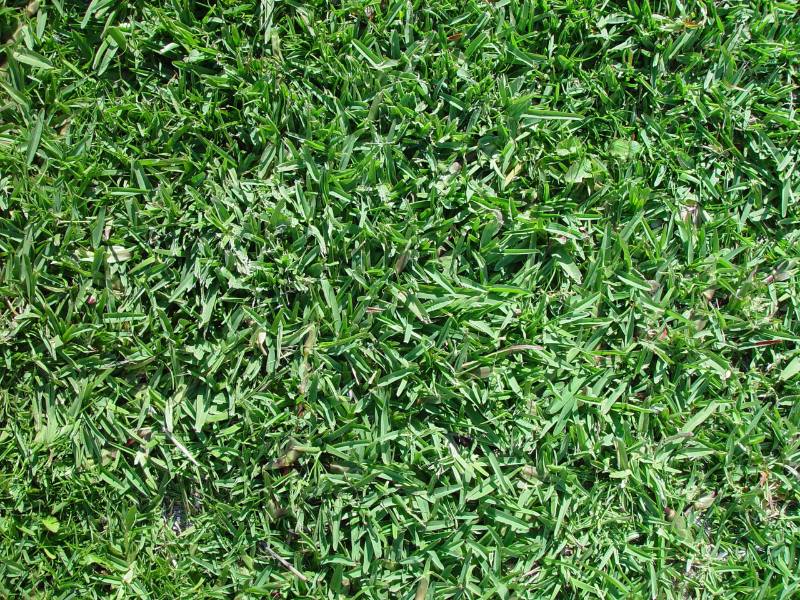
Photo Credit: Pixnio
Lawn owners across the Sand Hill State typically grow two types of turfgrass: summer and winter grasses. Up in Flagstaff, Prescot, Payson, and other communities in the northern mountain range, folks have cool-season grasses in their yards, like:
- Kentucky bluegrass
- Tall fescue
- Perennial ryegrass
- Annual ryegrass
Down in the Phoenix area, Tucson, Mesa, Yuma, and all across the low deserts, permanent lawns are planted with a warm-season grass such as:
- Bermudagrass (Tifgreen 328, Tifway 419, Santa Ana, Midiron varieties)
- Zoysiagrass
- Buffalograss
- St. Augustinegrass (Palmetto, Celebration varieties)
Arizona’s central and southern homeowners grow two types of grasses to keep the lawn green year-round. The best grass for Arizona’s hot summer is Bermuda, and the top overseeding option for the winter months is perennial ryegrass.
4. Seed Bermuda in May
Bermudagrass needs 6 to 8 hours of direct sunlight and recovers well from drought. Your kids and pets can play on its lush carpet without major damage, and it has good resistance to diseases and pests.
It’s a fast grower and establishes quickly. But it also needs diligent maintenance (watering, mowing, fertilizing, dethatching) to keep it healthy and neat.
Bermuda is best planted in Arizona in early spring before temperatures rise over 80°F. This gives the new lawn time to grow a robust enough root system to handle the scorching heat. It’s a perennial grass, so you plant it one time from sod or grass seed, and it comes back every spring. Bermudagrass starts to yellow by September or October when it enters dormancy for the winter.
5. Stick to a Good Watering Schedule During Summer
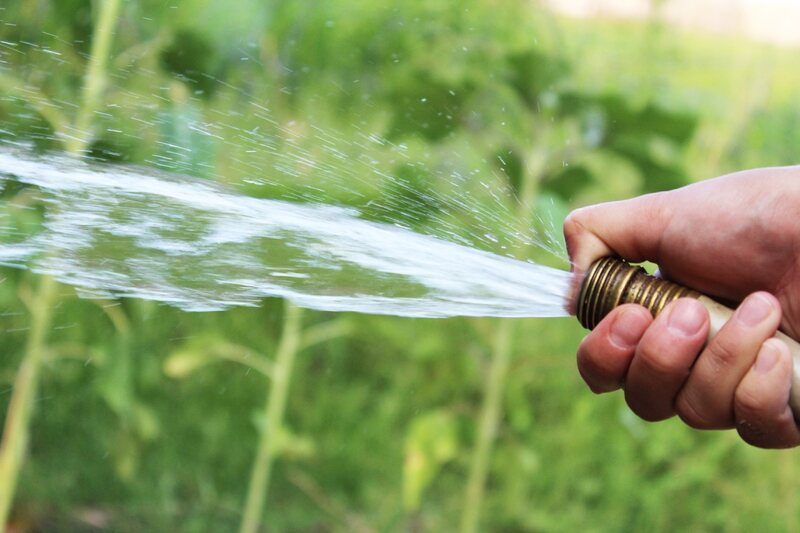
In the arid Sunset State, summer is about 4 months long (June to September) and comes with high temperatures. The state average is 98°F during the day, with Maricopa County and the Phoenix area seeing more than 20 days a year with over 110°F.
It’s torrid and dry. And your lawn can stay green only if you water it correctly. Here are some tips to help you irrigate enough without wasting water:
- Irrigate once every three days.
- Spread enough water to get 10 inches deep into the soil. This promotes deep, robust grassroots and improves drought tolerance. You need to water about ¾ inch per session to achieve this. Stick a long screwdriver into the soil an hour after irrigating. The lawn is watered correctly if you can get it about 10 inches deep without much effort.
- Water early in the morning, ideally before 5:00 a.m. to prevent evaporation.
- Irrigate sunny grasses for 30 minutes and shady grasses for 15 minutes.
- To keep Bermuda at its best, avoid letting it wilt between waterings.
- Ensure your sprinkler system is spreading the right amount of water in the most efficient way. Hire a lawn care professional to audit your sprinkler system or check it DIY.
- Keep an eye on your grass. It will tell you if it’s stressed by too much or too little water. Here’s what to look for:
| Signs of Underwatering | Signs of Overwatering |
| • The grass turns a bluish-grey tint. • It doesn’t recover as fast as usual after you step on it. • If you put your hand on the turf in the evening, hours after the sunset, it still feels warm. • You have a hard time pushing a screwdriver into the soil. | • You keep seeing puddles around the yard. • Instead of a fresh grass fragrance, you feel a musty odor. • The ground feels mushy and soft beneath your feet. • You detect signs of mushrooms and algae. |
Pro tips:
- Check the Arizona Meteorological Network (AZIMET) guide. It will tell you how many inches of water to apply to your Bermuda lawn.
- Watch the soil while watering. If you notice runoff, change the way you irrigate. Split it into two sessions with half the amount of water each and leave 30 minutes in between to allow absorption.
- Use the same sprinkler nozzle type and size around the lawn to ensure uniform irrigation.
6. Test the Water Amount
Overwatering and underwatering are equally damaging to Arizona turfgrasses, exposing them to diseases, pests, heat damage, and weed pressure. To know you’re watering correctly, check:
- The amount of water the sprinkler system spreads.
- If the water is spread uniformly across the lawn.
It’s easy to test your sprinklers by following these steps:
- Place some shallow cans across the lawn (about 4 for a 15-foot by 15-foot area).
- Turn on the sprinklers and leave them on for 10 minutes.
- Turn off the irrigation system and measure the water level in all the cans.
- Calculate the average water amount and how much time you need to leave the sprinklers on to apply about ¾ inches of water.
If there are significant differences between the cans, adjust the sprinkler’s position and consider adding extra sprinklers to cover drier areas.
7. Mow the Grass Taller from June to September
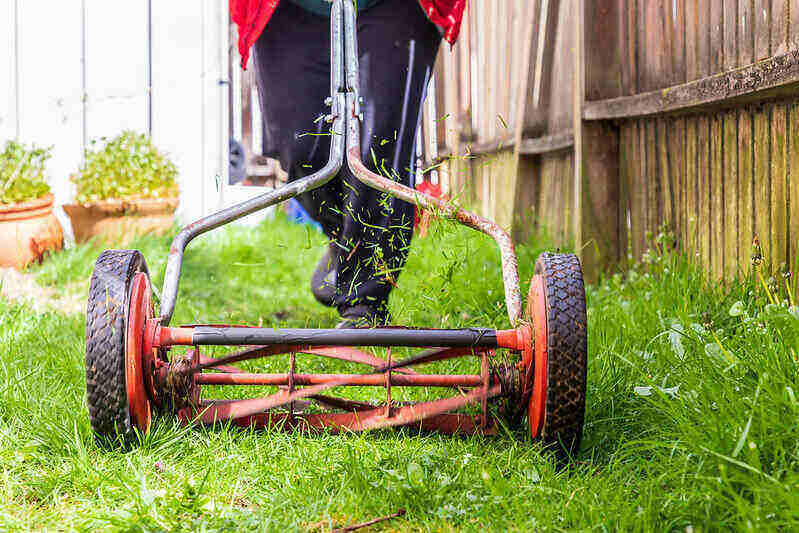
Bermudagrass needs to be mowed down to ¾ to 2 inches tall. Keeping it taller during summer promotes deep roots and shades the soil and grass stems. Here’s how to transition from a low cut to a tall lawn and back:
- Start at ¾ inch when you first mow after the grass is established (mid-May or June).
- Raise the lawn mower blades by ¼ inch per month until September.
- From September, reverse the pattern, then change it again in May.
Mow every 5 to 7 days, May through September. Avoid mowing the grass too short during the summer. Shorter grass is more vulnerable to heat stress and diseases, and it needs more water.
8. Aerate and Remove Thatch During the Growing Season
Arizona’s climate is hot and dry, so water must be absorbed quickly and efficiently into the soil to make the most of it. If the yard has clay soil that’s easily compacted, permeability can be an issue. Aerate the lawn during its growing season to keep the soil loose and the lawn healthy.
With a fast grower like Bermuda, dethatching is another task to put on the summer lawn care calendar. A thin layer of thatch can be beneficial, keeping the moisture in the soil and the ground temperature cooler. But when it gets over ½ inch thick, you must remove it.
Thick thatch can suffocate the grass, blocking water and air from getting into the soil. Use a power rake to cut and loosen the thatch with the blades ¼ inch above the soil. Rake up the debris, which you can use for compost.
9. Fertilize Monthly from April to September
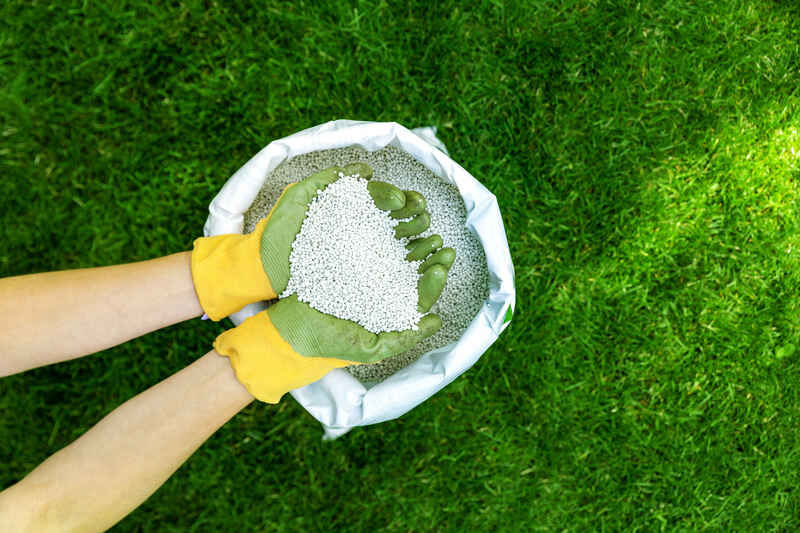
Arizona soils are poor in nitrogen, and iron deficits are common in plants. To keep healthy green grass, stick to a regular fertilization schedule. Fertilize with a slow-release formula with iron during the growing season, once every 4 to 6 weeks. For summer grasses, this means April to September.
If you overseed with ryegrass, fertilize the grass mid-winter to keep it green and healthy. Stop fertilizing the lawn in February to let the winter grass die faster. After your lawn has transitioned back to Bermuda in spring, start fertilizing again.
10. Overseed With Ryegrass in October
Early fall is the best time to overseed with winter grass, and the most common choice for Arizona is perennial ryegrass. Ryegrass has good traffic tolerance, is less prone to thatch, and needs less maintenance than Bermuda.
When temperatures fall below 70°F, and the cold weather is close, spread ryegrass seeds over your lawn. Planted in early or mid-October, they will grow green and thick during winter. They will also die with summer heat, leaving the lawn free for Bermuda to rise again.
Overseeding the lawn with ryegrass requires some preparation. Before spreading grass seed:
- Mow the lawn slightly shorter than the usual trimming height (about ½ of an inch).
- Rake all the grass clippings from the lawn.
- If a thick thatch layer covers the ground, consider dethatching to ensure the seeds reach the soil surface.
To ensure the best germination rate, after spreading the seeds across the lawn, you should:
- Apply a starter fertilizer to help seed germination.
- Spread some organic mulch to protect the seeds from heat.
- Keep the soil moist, watering a few times a day. Grass seeds take seven to ten days to germinate.
Once grass seedlings are about one inch tall, reduce watering to twice or thrice a week. After two weeks, begin watering once a week.
11. Water Less During Winter
If you have a “blonde,” dormant, not-overseeded Bermudagrass lawn in winter, water it once a month to prevent desiccation (only if it doesn’t rain).
With ryegrass overseeded on Bermuda turf, consider applying ½ to 1-½ inches of water per week between November and May. This amount depends on the weather, the type of soil, and its ability to retain water.
FAQ About Growing Grass in Arizona
The Midirion Bermuda cultivar is the most popular grass in Arizona. It’s a low-maintenance, dense grass with a beautiful blue-green color.
The best time of the year to plant summer grass is mid-May, when temperatures rise above 80°F. Seed winter grass in early to mid-October when Arizona’s summer heat cools down, but there’s still enough warmth ahead to allow seedlings to get strong before winter.
The secret of keeping your grass alive in the Arizona climate is to water deeply during the summer heat, but not daily. Pros advise irrigating once every three days from June to September and ensuring water penetrates the soil about 10 inches deep.
Just like you can successfully grow grass in the Arizona heat, you an also grow many plants in your landscape. The best plants for the Arizona heat include succulents, cacti, and many other desert plants.
Start Enjoying a Green and Thick Arizona Lawn Today!
Growing green, lush grass in the dry and hot Arizona climate is a job for passionate lawn owners. You need two types of grass and enough time and attention for regular watering, fertilizing, and mowing. Or an excellent lawn care company nearby to do all the essential maintenance.
Whether you’re from Phoenix, Mesa, Scottsdale, Glendale, or anywhere else in the Grand Canyon State, LawnStarter can connect you with local lawn care pros to lend a hand.
Main Image Credit: Pxhere

